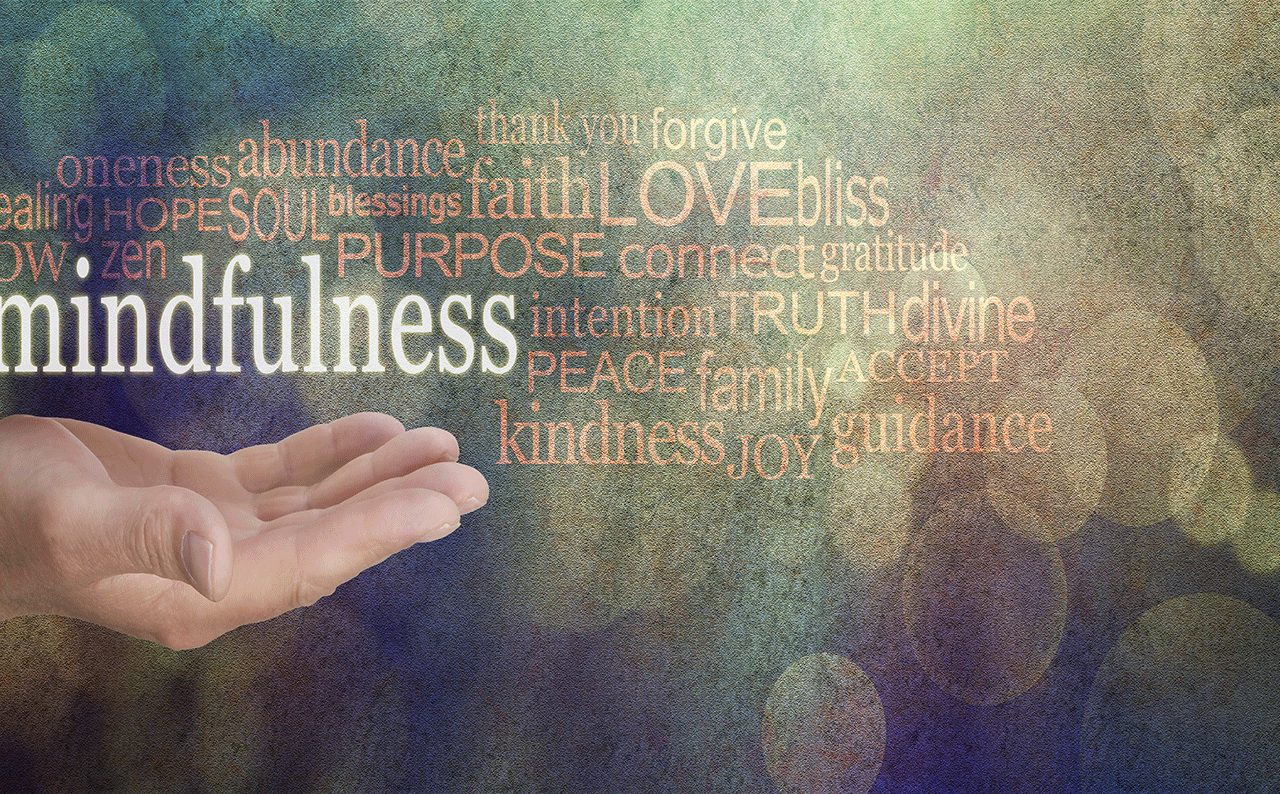You may be very familiar with mindfulness or you may have a vague notion of a buzz word that has something to do with meditation. Regardless of your experience, we are here to detail the ways in which mindfulness can be beneficial to your children. Being more mindful helps people reap a multitude of benefits, anyone can participate and learning alongside your child can be fun!
What, exactly, is it?
Merriam Webster defines mindfulness as:
- the quality or state of being mindful
- the practice of maintaining a nonjudgemental state of heightened or complete awareness of one’s thoughts, emotions or experiences on a moment-to-moment basis
also: such a state of awareness
Sometimes it can be helpful to define mindfulness by stating what it is not. Mindfulness is not about clearing the mind. It is not about silence or ending conflict. Mindfulness is definitely not a quick fix for anything. Mindfulness provides us with a way of looking deeper at our lives. We learn to observe events, sensations and feelings while acknowledging them and accepting them for what they are.
In today’s society it can be easy for everyone – children included – to get caught up in the daily rush. Mindfulness allows us to slow down and be present. Many who are new to the practice may wonder how they might find the time to squeeze in one more thing. Once you form daily habits of mindfulness you will see your schedule open up and you may realize your life feels a lot more free and flexible.
Setting realistic expectations
It’s important to remember that mindfulness is non-judgemental. Although it does tend to help people in many ways, it wouldn’t be fair to try it with the intention of making a child become, say, more attentive. Improved attention and focus are a likely outcome, but cannot be expected. Mindfulness is different for everyone, and acceptance of oneself and each other is a healthier and more realistic goal.
On a more basic level, you may be excited to try these exercises and ideas, while your child may not be. We find that many kids do love the meditations and games detailed below, but they’re not for everyone and that’s okay. So, as you give mindfulness a try with your children, keep in mind that they are their own independent people. Everyone will take away something different from the practice.
The raisin meditation
Mark Williams and Danny Penman have written a great book entitled Mindfulness, an Eight-Week Plan for Finding Peace in a Frantic World. This book is written for adults and we highly recommend it as a resource. It’s full of scientific explanations regarding how behaviors are dictated by brain function and what we can do to create change within our own lives. As a bonus, it contains a link to meditation audio files. Although not a book for children, there is a fantastic exercise contained within that kids love: the raisin meditation.
Sit in a quiet space with your child. Feel free to light a candle (or not) and get comfy. Ask your child to open their hand, palm facing upwards, and place a single raisin in the middle. Tell them not to eat it just yet and take another raisin for yourself. The goal of this exercise is to slow down and pay close attention, seeing if you can notice attributes that are typically overlooked during the business of our everyday lives. We use all of our senses to zoom and observe this raisin closely.
- Sight – Look carefully at your raisin. What do you see? Allow your eyes to explore the ridges and valleys, to notice color variations, and to find the spot where this dried grape was once attached to a stem. What words might you use to describe these observations?
- Sound – With a raisin, this will surely be a little silly, but that’s okay! Hold the raisin gently to your ear and have a listen anyway. Children will revel in watching their parents listen to a piece of dried fruit as they do the same, you will all confirm its silence, and have a giggle before moving on to the next step.
- Smell – With delicate, inward breaths, take in the scent of the raisin. What do you notice? What could you compare it to? Try not to rush this step; take the time to really pay attention. Find words to describe the scent.
- Texture – This will be done in two parts. First, gently feel the exterior of the raisin with your fingertips. Repeat the process of noticing and describing. When everyone is ready, place the raisin on your tongue. Without chewing use your tongue to pay attention to what the raisin feels like in your mouth. Later, when you do end up swallowing it, notice the sensations as it travels down your throat.
- Taste – Likely the moment your child has been waiting for, ask them to take their time while chewing and tasting the raisin. Because you have spent so much time noticing every detail of this tiny piece of fruit, the anticipation may make it seem like the tastiest raisin you have ever eaten! Is it sweet? Sour? Bland? Intense?
This activity can be repeated with almost anything and it’s a great idea to do so. Wait a few days and try the whole process over again with a chocolate chip, slice of cucumber or whatever else you happen to be eating. At mealtimes, take a few moments to be intentional about appreciating your food. Notice what it looks like, smells like, feels like, and chew slowly to discover more about how it tastes. Most importantly, have fun while doing so!
Looking for more mindfulness games and activities? Try these ideas:
- Object box – Find a small collection of very similar items (cards, pennies, pebbles, etc.) Each player chooses one and has one minute to study their item carefully. The items are then placed in a box and shaken up. Players try to find their original item.
- Creature search – Take a walk along a familiar path or through a park you frequent. Everyone has to pay attention and find as many living organisms as possible. It’s amazing how much we overlook even when we spend time in nature!
- Visual breath games – There are many variations of this. Try blowing bubbles or using a pinwheel with your child. Encourage them to take a deep breath in through their nose and feel the air as it leaves their mouth. They can take tiny breaths or big breaths, slow breaths or quick breaths.
Meditation resources
These videos will give you examples of some common, basic mindfulness meditations. We recommend that you use the videos for their audio. Children should not be watching the screen as they listen so they can focus on all their senses.
Body scan meditation: Direct your awareness to specific parts of your body, noticing sensations (or lack of sensations).
Loving kindness meditation: Take time to love yourself and send loving thoughts to others.
Observing thought meditation: This type of meditation is best for children ages 6 and up. This video explains why it’s helpful, while this one guides children through the practice.
We hope this post has been interesting and informative. If you try any of the meditations or ideas with your children, we would love to hear how it goes!

